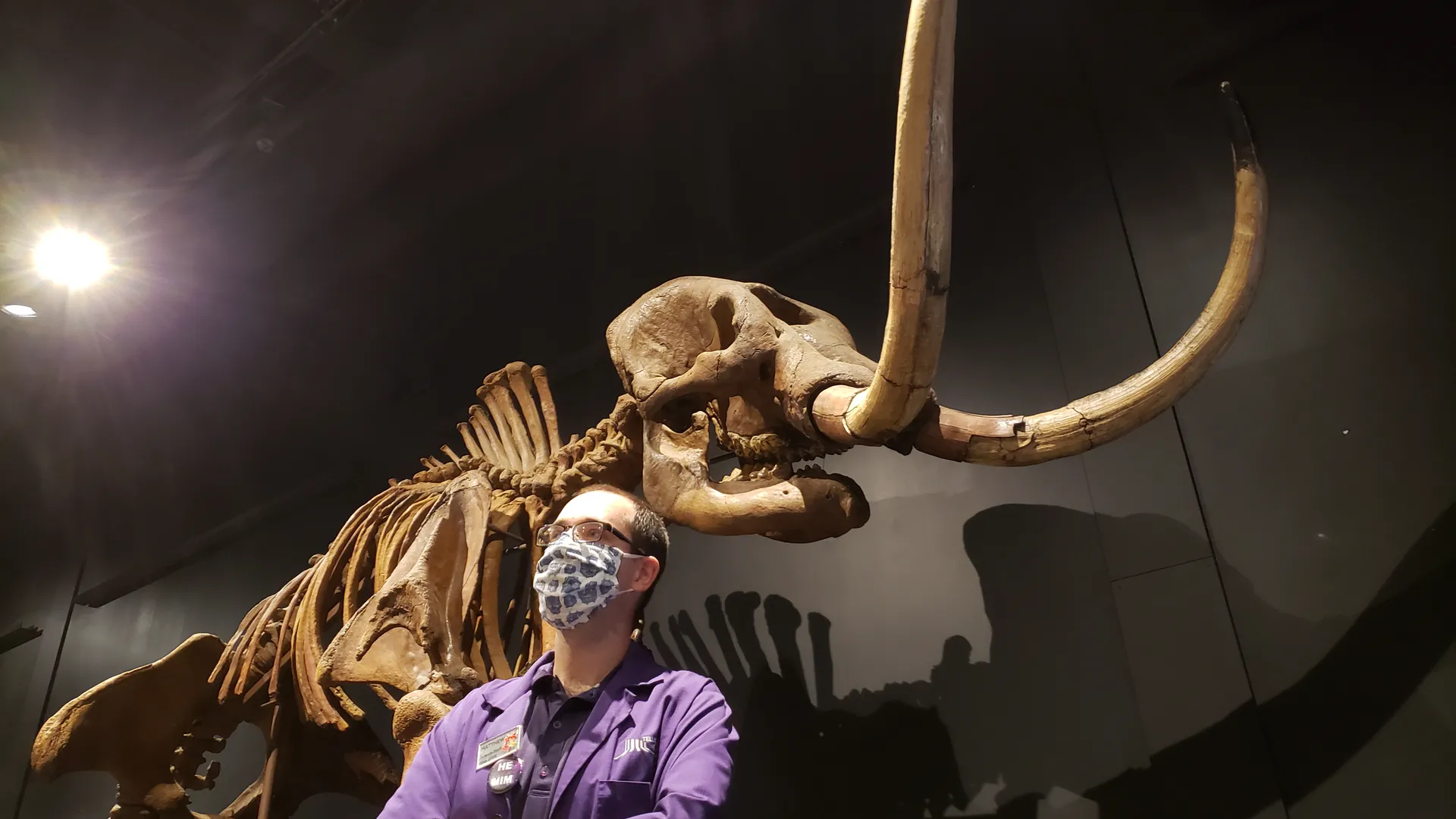Alberta's Giant Past
Posted:
Have you ever stood next to a giant? I don’t mean a basketball player; I mean a truly gigantic creature.
It happened to me once and I still remember it clearly. Years ago, when I worked at a zoo, I was eating lunch in a grassy field when I felt a gentle tapping on my shoulder. I turned around to find myself staring up at an elephant. Fear, wonder, and confusion all flashed through my mind before I came to my senses and got out of there.
This situation was so strange to me because here in North America we don’t really have megafauna (gigantic animals). Well, that’s not entirely true. There is one living species in North America classified as megafauna. Do you know what it is? The answer is at the bottom of this post.
We used to have plenty of megafauna here in North America, and recently too! 40,000 years ago, we had 15 species in North America that grew over 400kg. This includes:
- The mastodon and the woolly mammoth, two hairy relatives of the elephant.
- Megalonyx, a ground sloth, grew over 3 meters tall and weighed 1,000 kilograms; that’s heavier than two grand pianos!
- Camelops, a North American camel. Camels originated in the Americas and later travelled to Eurasia.
- The giant, short-faced bear, one of the largest mammalian carnivores that ever lived.
These creatures are now extinct. The majority died off in the last 11,000 years during a global event called the Quaternary Extinction. What happened to these magnificent creatures? Why did they all disappear?
Nobody is quite sure what caused this extinction event, but scientists have plenty of theories. Increased tool usage by human hunters, the end of the ice age (climate change) and a meteor impact all likely played a role, but we may never know how large of an impact each had.
Oh, and the last surviving North American megafauna: Alberta’s bison.

Credit: WikiImages, Pixabay
Related Articles


Food Chain Reactions
How Climate Change is Impacting Canada's Lakes


It Is Ice to See You
How Seasonal Connections Are Affected by Climate Change


Getting to the Core of Climate Change
A Look at How Refrigerants Are Affecting Our Environment through Ice Cores
Related Articles


Food Chain Reactions
How Climate Change is Impacting Canada's Lakes


It Is Ice to See You
How Seasonal Connections Are Affected by Climate Change


Getting to the Core of Climate Change
A Look at How Refrigerants Are Affecting Our Environment through Ice Cores




